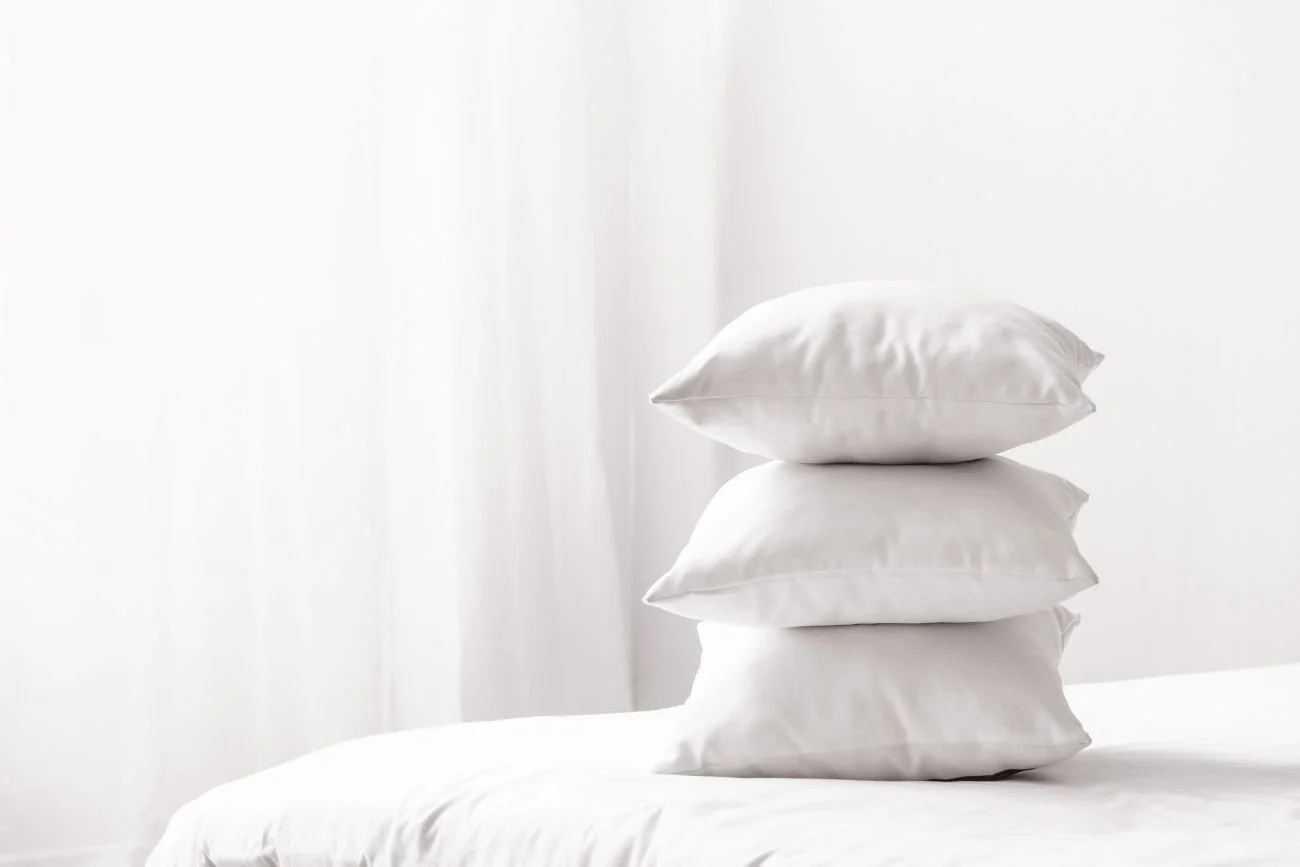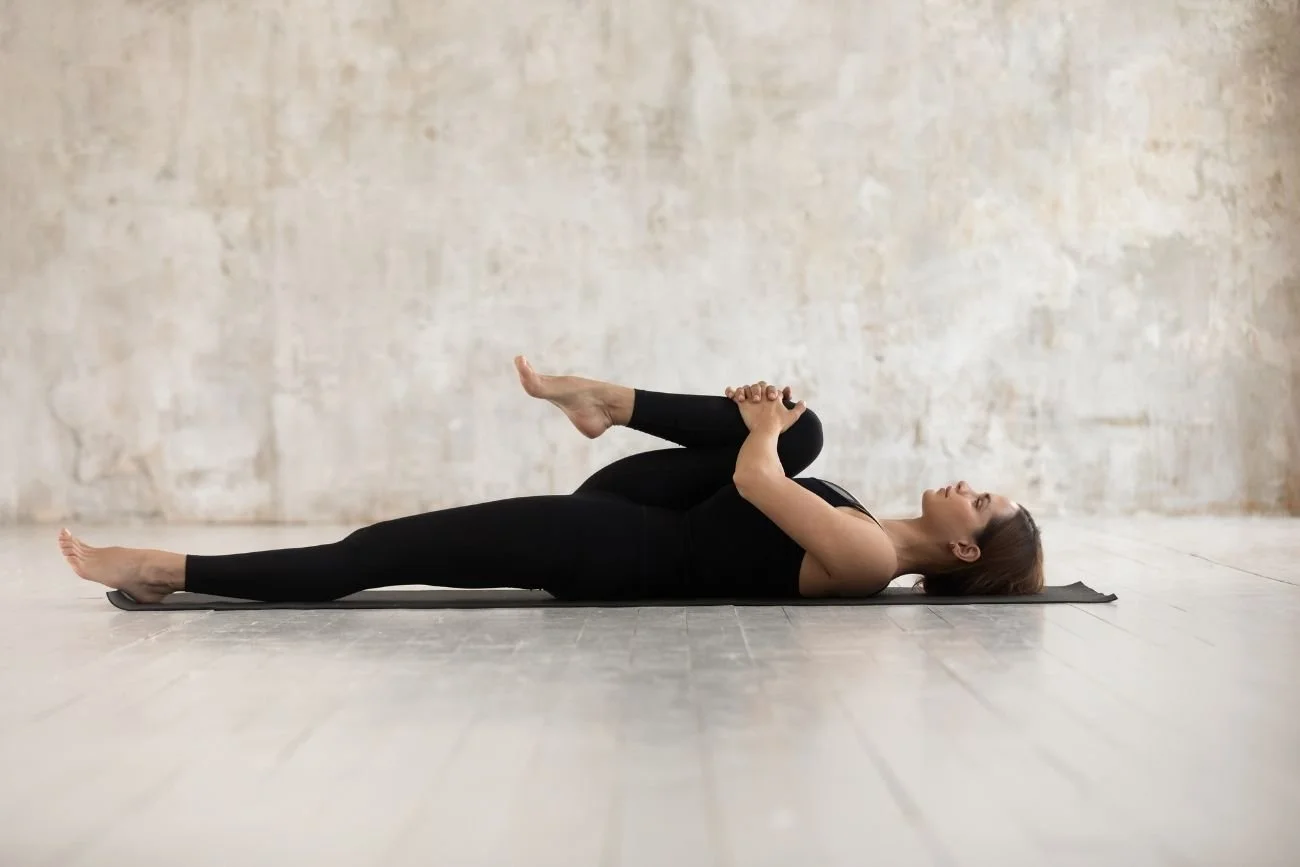Rest Easy with Back Pain: Sleep Positions & Pillow Hacks
Whether you’re waking up stiff from everyday back pain, jolts of sciatica, or the nagging ache of spinal stenosis, the way you sleep can make a world of difference. Lying on your back or side with the right support can reduce the pressure inside your spine by as much as 80% compared with sitting up.¹ And choosing a medium-firm mattress isn’t just a comfort trend—it cut chronic low back pain almost in half and helped people move more easily after three months in a large clinical trial.² These simple adjustments can transform restless nights into restorative sleep.
The pillow you rest on matters just as much: using the proper height so your neck and spine stay in a straight line prevents morning stiffness and discomfort.³ Even simple tweaks—like placing a small pillow between your knees when you lie on your side—can align your hips and reduce spinal loading by roughly 50%.⁴
In this guide, we’ll walk you through the best pillows and supports, sleep positions, mattress tips, and evening routines to help you rest easier and wake up feeling refreshed. Plus, we’ll touch on how adding acupuncture can enhance these sleep positions and strategies—so you can finally say goodbye to restless nights and hello to pain-free mornings.
Best Pillows & Supports for Lower Back Comfort
Finding the right pillow setup is key to supporting your spine’s natural curve and reducing back pain. When head, neck, and lower back all stay aligned, you’ll wake up without that familiar morning ache. Here’s how to choose, position, and supplement your pillow hacks for optimal lumbar support:
1. Match Pillow Loft to Your Sleep Position
- Side Sleepers: Look for a pillow with enough height to fill the gap between neck and mattress so your head sits level with your spine. A loft of 10–13 cm is typically ideal.³
- Back Sleepers: A slightly lower pillow (8–11 cm loft) supports the natural curve of your neck without forcing it forward.³
2. Choose Material & Add Lumbar Support
- Memory Foam: Conforms to head and neck, offering pressure relief and steady support all night.
- Latex or Micro-bead: Provides a responsive, buoyant feel—ideal if you change sleep positions often.
- Hybrid/Adjustable: Pillows with removable inserts let you customize loft and firmness instantly.
- Lumbar Support Pillow: Tuck a shaped back pillow behind your lower back to maintain the spine’s inward curve. In a randomized trial of chronic low back pain sufferers, adding a back-care pillow led to a 2–3-point greater drop in pain scores over 12 weeks compared with therapy alone.⁵
3. Keep It Fresh
Pillows lose shape over time. Replace every 1–2 years. Quick test: fold vertically; if it doesn’t spring back, time for a new pillow.
Optimal Sleep Positions to Ease Back Pain
Choosing the right sleep positions takes pressure off sensitive spinal areas and makes pillow hacks more effective. Try these to find your best sleep positions:
Side-Lying with Knee Support
Sleeping on your side with a pillow between knees keeps hips, pelvis, and spine aligned, reducing rotational stress on the lower back by about 50%.⁴
Back-Lying with Under-Knee Pillow
Lying on your back with a small pillow or rolled towel under knees maintains lumbar curve and shifts weight off discs. Great when side-lying feels uncomfortable.⁶
Semi-Fetal Position
Curling slightly with knees drawn toward chest opens space between vertebrae, relieving nerve irritation in conditions like sciatica or spinal stenosis.⁴
Avoid Stomach Sleeping
Stomach sleeping forces neck rotation and flattens lumbar curve, increasing strain. If you can’t quit it, place a thin pillow under pelvis and lower abdomen to reduce low-back arch.⁶
Choosing the Right Mattress & Accessories
Your mattress is the foundation for pain-free mornings. Pair it with pillow hacks and sleep positions for maximum benefit.
Opt for a Medium-Firm Mattress
Research consistently shows medium-firm mattress delivers the best balance of support and comfort for chronic low back pain.² A 2021 review of 39 trials confirmed medium-firm designs help maintain alignment, reduce pressure points, and boost sleep quality.⁷
Try Zoned or Insertable Lumbar Layers
If your mattress is too soft or firm, add a zoned topper or inflatable lumbar insert. Biomechanical testing found these layers redistribute pressure away from lower-back joints and discs.⁸
Consider a Mattress Topper
A 2–5 cm high-density foam topper adds cushioning without sacrificing support. Memory-foam or gel-infused toppers combine pressure relief with temperature regulation.
Adjustable Bases & Bed Wedges
For sciatica or spinal stenosis, an adjustable frame or wedge can elevate your body to reduce nerve compression. Elevating head by 10–15° eases acid reflux and snoring; lifting knees further off-loads lumbar discs.
Evening Routine & Sleep Hygiene for Lasting Relief
A calming evening routine sets the stage for restorative sleep—so your spine and pillow hacks work their magic all night.
Wind-Down Stretches
Gentle stretches release daily muscle tension. Try drawing one knee to chest, holding 20 seconds, or hugging both knees in a semi-fetal pose to open vertebral spaces. These moves ease sciatica or spinal stenosis nerve compression and prepare you for ideal sleep positions.⁴
Mind-Body Practices
Spend 5–10 minutes on guided breathing or meditation before bed. In adults with chronic insomnia and pain, a cognitive-behavioral insomnia protocol cut pain intensity by 1.5 points and improved sleep efficiency by 12% after eight weeks.¹⁰
Optimize Your Sleep Environment
- Lighting: Dim lights 30 minutes before bed; avoid blue-light screens.
- Temperature: Keep bedroom around 65 °F (18 °C) to trigger sleep onset.
- Noise & Comfort: Use white-noise machines or earplugs to mask disruptions.
Consistent Schedule & Hygiene
Go to bed and wake at the same time daily. Skip late-night snacks, limit caffeine after mid-afternoon, and avoid heavy meals within two hours of bedtime. Poor sleep quality over time nearly doubled the risk of back-related disability in a 20-year cohort study.⁹
How Acupuncture Can Boost Your Sleep & Recovery
Adding acupuncture to your sleep strategy amplifies these pillow hacks and sleep positions. In a JAMA trial of chronic sciatica patients, real acupuncture produced a 40% drop in night-time pain and a 25% jump in sleep quality versus sham.¹¹ By releasing muscle tightness, improving circulation, and calming pain signals, acupuncture helps you stay in ideal sleep positions longer—so you wake up more rested and with less stiffness.
At Nyberg Acupuncture & Wellness, we tailor each plan to your needs—whether you’re battling sciatica, spinal stenosis, or general back pain. Combine our care with smarter sleep positions, pillow hacks, and a medium-firm mattress, and you’ll be on the fast track to peaceful nights and pain-free mornings.
Taking the Next Step
You don’t have to face another night of tossing and turning—or another morning stiff with pain. At Nyberg Acupuncture & Wellness our personalized care plans combine acupuncture and ATP Resonance BioTherapy®, a non-invasive “software update” for your body that uses low-level electrical currents to reduce inflammation, boost circulation and support natural healing—so you can finally rest—and recover—more effectively.
- Book Your Consultation
Call us at +1 (503) 336-4747 to schedule a time to come see us. - Personalized Assessment
We'll review your pain history, sleep challenges, and health goals together to create a treatment plan tailored to your needs. - Integrative Care
Your care may include acupuncture, ATP Resonance BioTherapy®, and other supportive therapies to relieve back pain—including sciatica or spinal stenosis. - Ongoing Support
Relief takes consistency. We’ll monitor your progress, adjust your plan as needed, and share at-home tips to keep you moving toward pain-free mornings.
Take control of your nights—and your days. Call Nyberg Acupuncture & Wellness at +1 (503) 336-4747 and start sleeping—and living—better.
Frequently Asked Questions
-
Sleeping on your side with a pillow between your knees keeps your hips and spine aligned and can reduce lumbar loading by roughly 50%.⁴ If side-lying isn’t comfortable, try lying on your back with a small pillow or rolled towel under your knees to maintain the spine’s natural curve.⁶
-
Side sleepers should aim for a pillow loft of about 10–13 cm, while back sleepers do best with 8–11 cm to keep the head, neck, and spine in a straight line.³ Memory-foam or adjustable-fill pillows let you fine-tune support until it feels just right.
-
Yes. In a multicenter RCT, people with chronic low back pain who switched to a medium-firm mattress experienced significantly less pain both in bed and on rising—and reported better function after 90 days—compared with a very firm surface.²
-
Absolutely. In a randomized trial of chronic sciatica patients, acupuncture led to a 40% reduction in night-time pain and a 25% improvement in sleep quality compared with sham acupuncture.¹¹ By releasing muscle tension and rebalancing pain signals, it helps you stay in comfortable positions longer.
-
Every patient is different. Some notice relief within the first few treatments, while others will take longer to integrate its effects. We’ll assess your pain patterns and lifestyle to recommend the frequency and duration that work best for you.
-
Yes—when performed by an experienced, licensed practitioner like Dr. Jeffrey Savage, DACM, LAc, acupuncture is a gentle, low-risk therapy. It can help ease nerve irritation in sciatica and improve circulation around compressed nerves in spinal stenosis, all without the side effects often associated with medications or surgery.
References:
- Nachemson AL. Disc pressure measurements. Spine (Phila Pa 1976). 1981;6(1):93–97. doi:10.1097/00007632-198101000-00020
- Kovacs FM, Abraira V, Peña A, et al. Effect of firmness of mattress on chronic non-specific low-back pain: randomised, double-blind, controlled, multicentre trial. Lancet. 2003;362(9396):1599–1604. doi:10.1016/S0140-6736(03)14792-7
- Ren S, Wong DW, Yang H, et al. Effect of pillow height on the biomechanics of the head-neck complex: investigation of the cranio-cervical pressure and cervical spine alignment. PeerJ. 2016;4:e2397. doi:10.7717/peerj.2397
- Cary D, Briffa K, McKenna L. Identifying relationships between sleep posture and non-specific spinal symptoms in adults: A scoping review. BMJ Open. 2019;9(6):e027633. doi:10.1136/bmjopen-2018-027633
- Prommanon B, Puntumetakul R, Puengsuwan P, et al. Effectiveness of a back care pillow as an adjuvant physical therapy for chronic non-specific low back pain treatment: a randomized controlled trial. J Phys Ther Sci. 2015;27(7):2035–2038. doi:10.1589/jpts.27.2035
- Mayo Clinic Staff. Sleeping positions that reduce back pain. Mayo Clinic. Published January 19, 2024. Accessed July 11, 2025.
https://www.mayoclinic.org/diseases-conditions/back-pain/in-depth/sleeping-positions/art-20546852 - Caggiari G, Talesa GR, Toro G, Jannelli E, Monteleone G, Puddu L. What type of mattress should be chosen to avoid back pain and improve sleep quality? Review of the literature. J Orthop Traumatol. 2021;22(1):51. doi:10.1186/s10195-021-00616-5
- Normand MC, Descarreaux M, Poulin C, et al. Biomechanical effects of a lumbar support in a mattress. J Can Chiropr Assoc. 2005;49(2):96–101.
- Skarpsno ES, Nilsen TIL, Mork PJ. The effect of long-term poor sleep quality on risk of back-related disability and the modifying role of physical activity. Sci Rep. 2021;11(1):15386. doi:10.1038/s41598-021-94845-7
- McCrae CS, Williams J, Roditi D, et al. Cognitive behavioral treatments for insomnia and pain in adults with comorbid chronic insomnia and fibromyalgia: clinical outcomes from the SPIN randomized controlled trial. Sleep. 2019;42(3):zsy234. doi:10.1093/sleep/zsy234
- Tu JF, Shi GX, Yan SY, et al. Acupuncture vs sham acupuncture for chronic sciatica from herniated disk: a randomized clinical trial. JAMA Intern Med. 2024;184(12):1417–1424. doi:10.1001/jamainternmed.2024.5463






